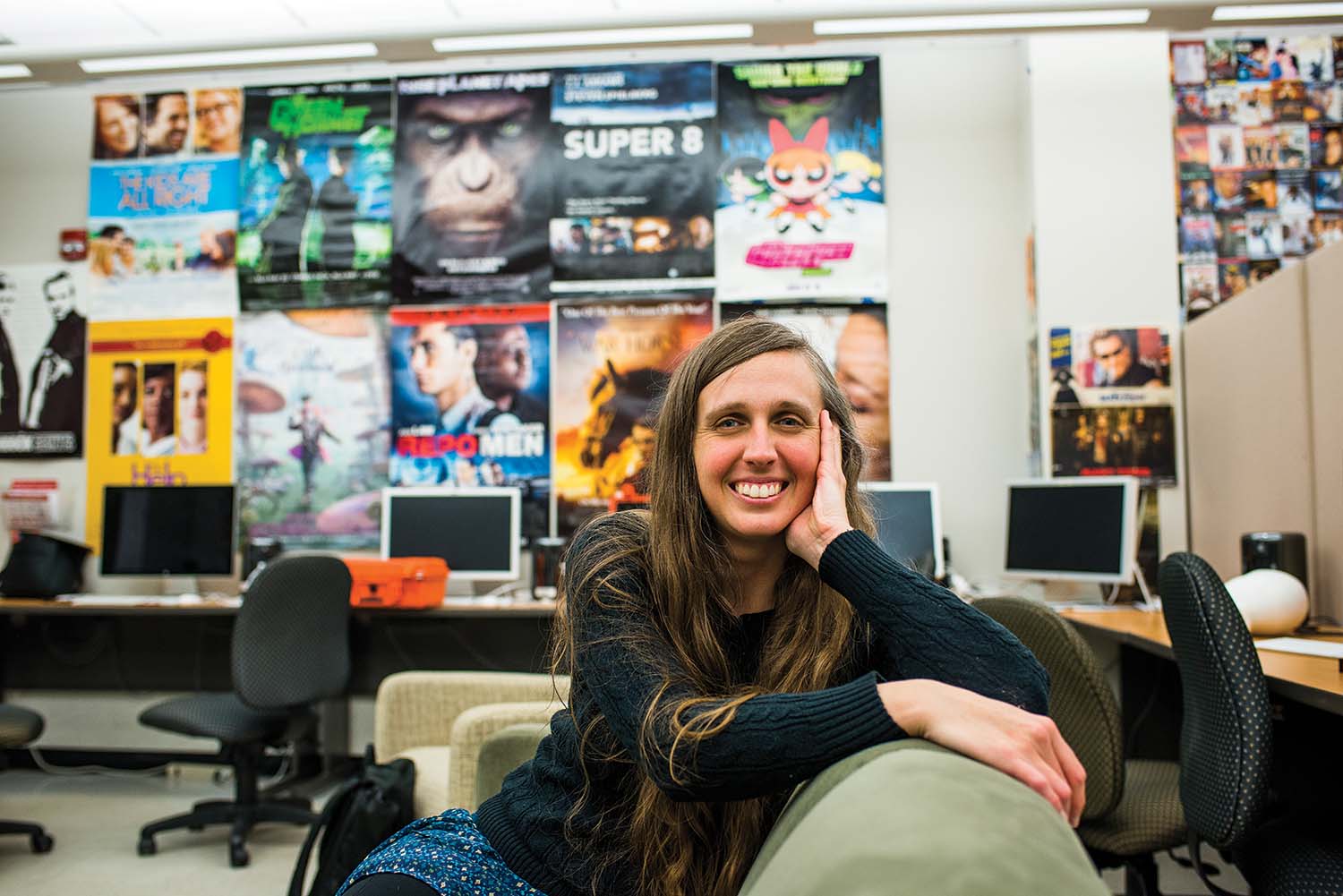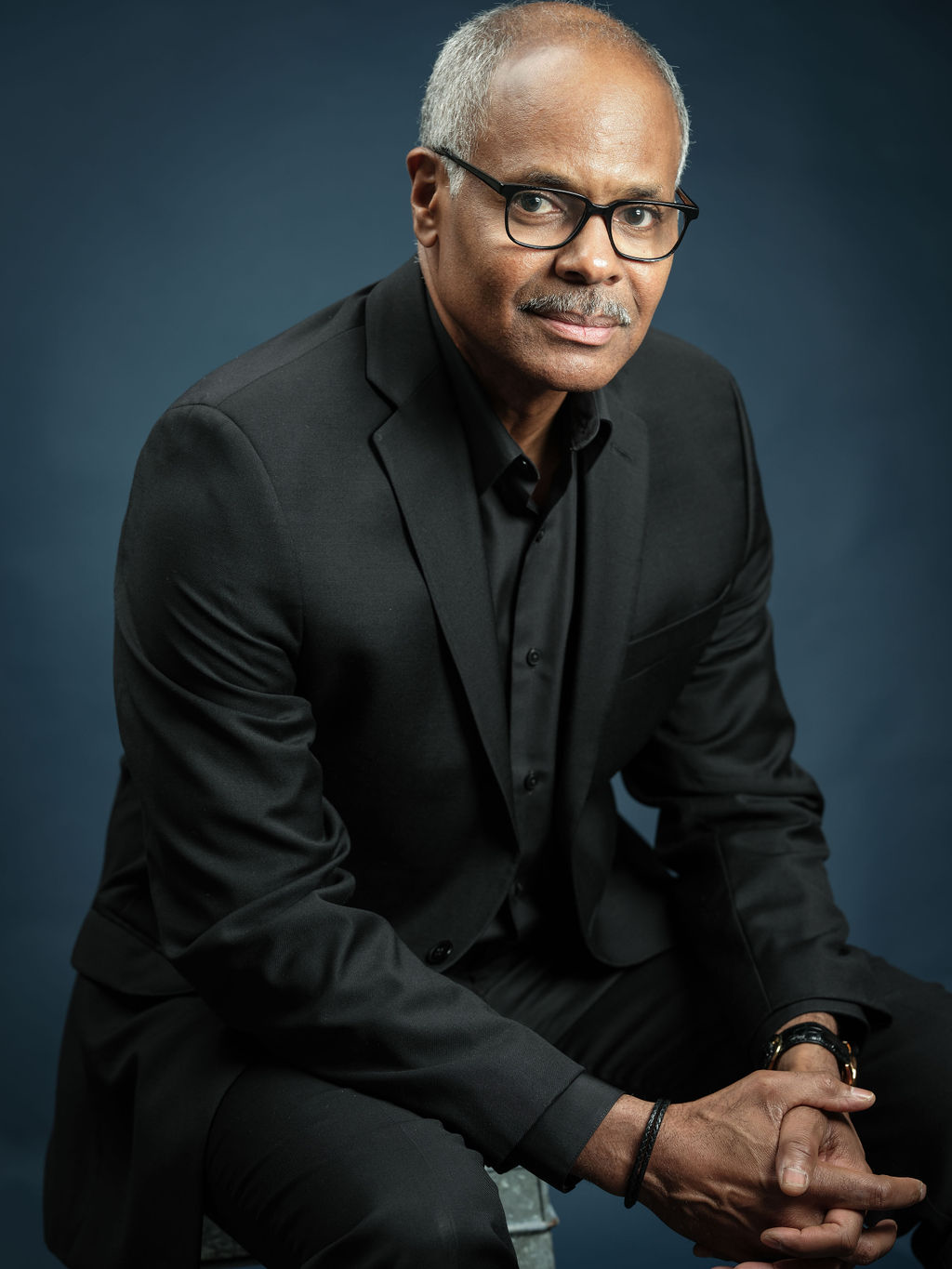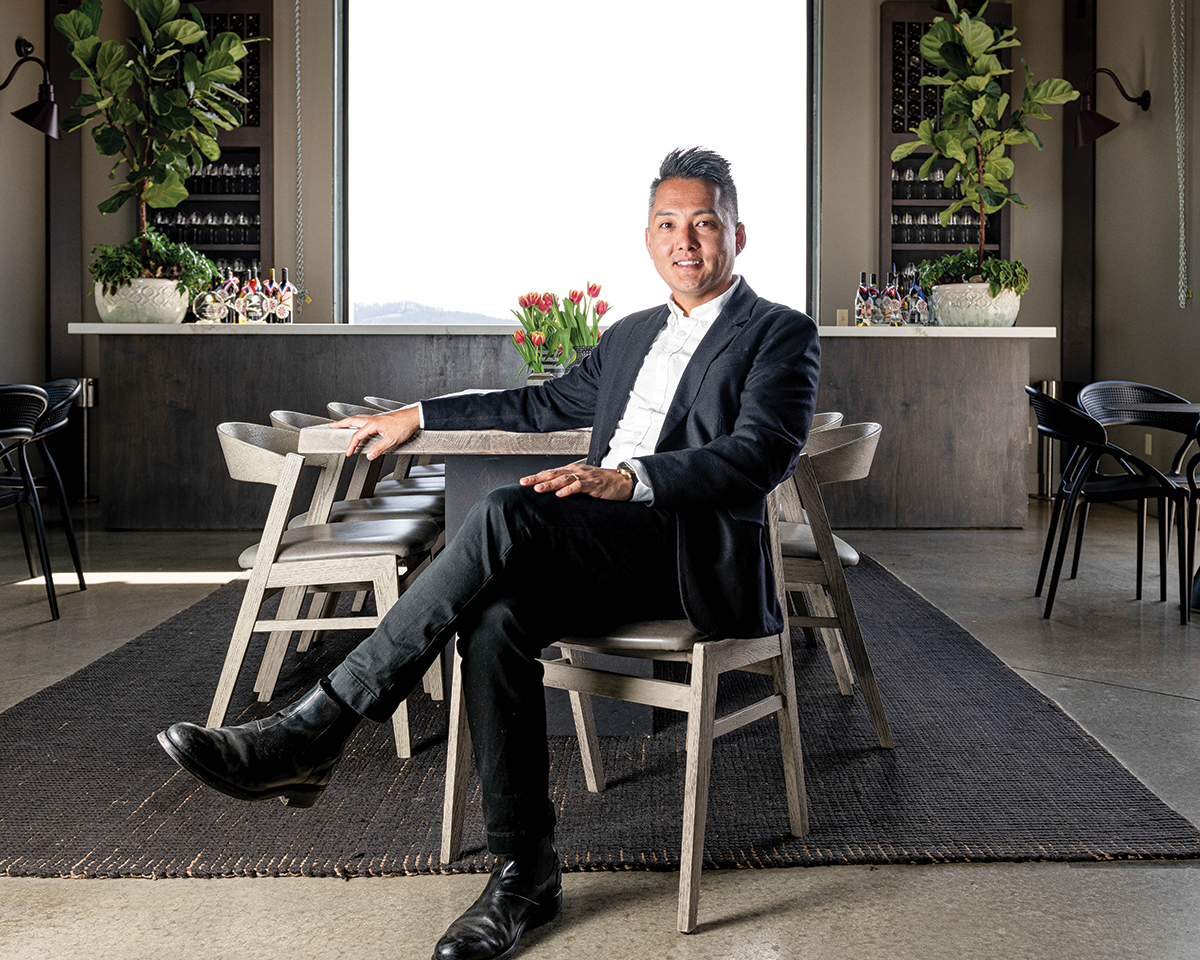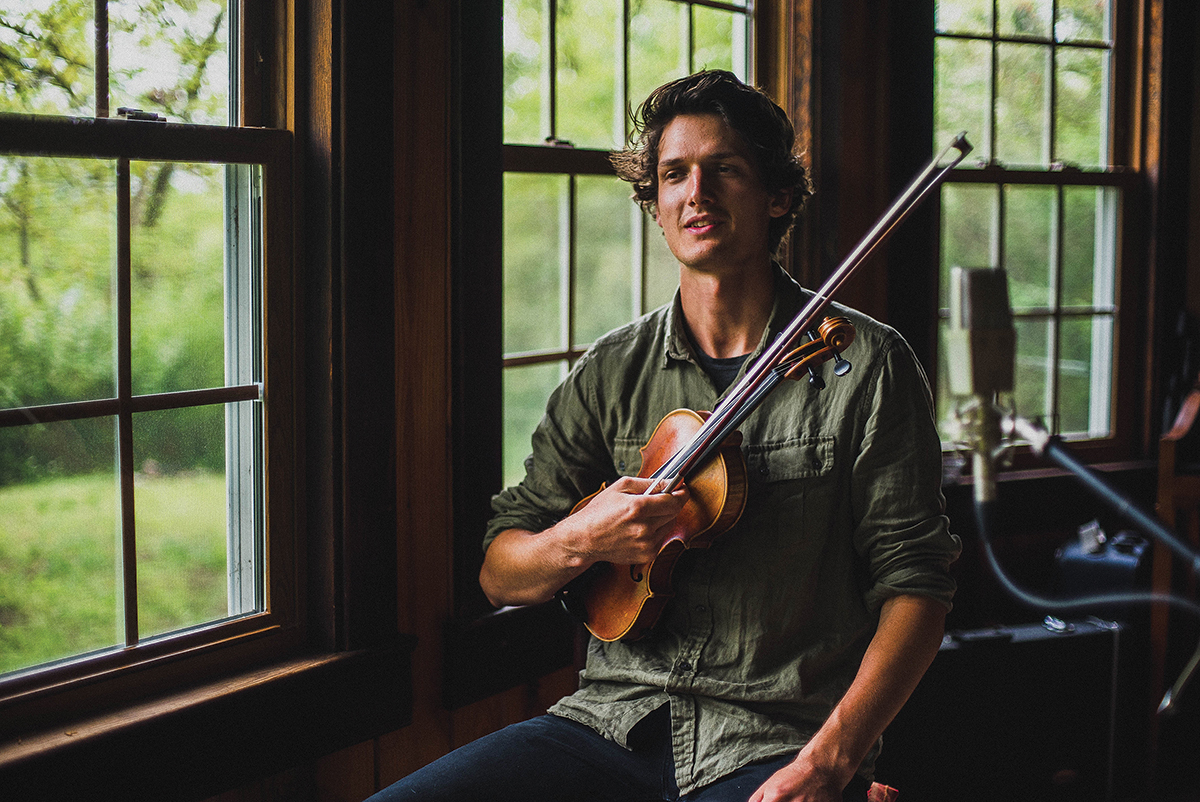
Charlotte Taylor offers a thoughtful approach to filmmaking. Photo by Karin Strickland
The video camera on Apple’s latest iPhone can record 30 frames per second in 4K resolution, continuously stabilize and focus the shot, and share the results almost instantly online. In contrast, Charlotte Taylor prefers shooting her work the old-fashioned way, on 16 mm film similar to that first introduced by Kodak in 1923, and developing many of the results by hand. “I think I like making my life hard,” Taylor says half-jokingly.
The filmmaker recognizes the extra effort inherent in her process, but she feels that the tactile nature of analog film is worth the hassle. “There’s something that feels right about being able to touch the thing that you’re working with,” Taylor says. “It’s calming and organic when I’m playing with the physical medium of film.”

BRCC Film Student Ray Stewart. Photo by Karin Strickland
Taylor’s background may also explain her predilection for a hands-on approach. She began making films in middle school, before digital cameras were widely available, then sharpened her skills through a Bachelor’s degree in film studies from the University of Florida and an MFA from the University of Iowa. While Taylor entered the movie world hoping to make music videos, she soon fell in love with the more avant-garde work her academic peers were producing.
Experimentation and physical film combine in Taylor’s work through techniques that highlight the presence of film as an object. She particularly enjoys cameraless animation, where she marks or manipulates actual frames of film by hand. The results emerge as striking arrays of abstract strokes and blobs, dozens of paintings per second shot through with the projector’s brilliant light.

BRCC film students Ivan Martinez and Jimmy Dang. Photo by Karin Strickland
Taylor is well known for her nonprofit Mechanical Eye Microcinema and its biggest success, Fierce Flix, a summer filmmaking camp for girls and gender minorities based in Asheville. But she maintains her connection to academic filmmaking as the head of the film- and video-production technology program at Blue Ridge Community College. Students can earn a certificate or an Associate degree as they work through a curriculum of camera work, editing, sound design, and film analysis. During the summer, the campus hosts ScreenX, a four-day filmmaking camp for high-school students that ends in a public premiere of their work.
Unique to ScreenX, Taylor says, is a close association between film and theater: participants in the camp’s acting track star for the production-track students. “Actors are trying to convey meaning through their bodies, while filmmakers are using the camera as a means of communication,” she explains. “We’re both trying to give the audience an emotional and intellectual experience.”

BRCC Film Student Ivan Martinez. Photo by Karin Strickland
Over the course of the camp, participants discover to unite their two disciplines in service of a single creative goal. Those behind the lens, for example, learn how different shooting angles can make an actor seem larger than life; those in front of it learn trust in the camera’s ability to pick up subtle expressions that may be lost on a stage audience.
“What a program like ours has to offer is how to make meaning out of cinema, rather than just how to turn on a camera,” Taylor explains. “You can use the skills and experiences that you’ve had in the world to say something that is important to you through filmmaking.”
Charlotte Taylor teaches film classes through Blue Ridge Community College, 180 West Campus Drive, Flat Rock. ScreenX, a four-day filmmaking camp open to rising 9th through 12th graders and 2018 high-school graduates, runs June 11-14, 9am-4pm. For more information, visit blueridge.edu/film, e-mail ce_taylor@blueridge.edu, or call 828-694-1855.



